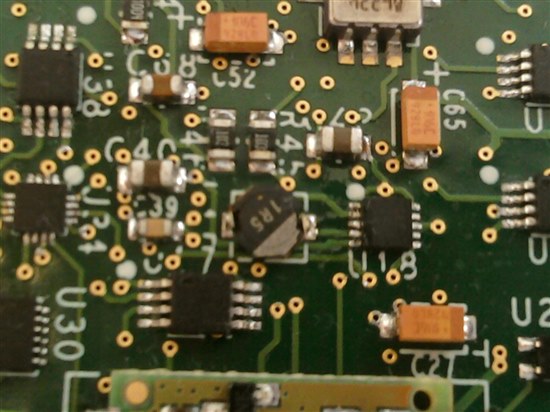Hi!
Below you can see my design for a power supply module.
There are two possible input supply voltages : (1)V_EXT_SUPPLY and (2)VBAT. The (1) is supposed to be a regulated voltage of 3.3V and the VBAT comes from an Li-ion battery, ranging from 2.6V to 3.7V.
- When the V_EXT_SUPPLY is active, the system takes supply power from there. V_EXT_SUPPLY is driven directly through TPS3619 to the rest of the PCB.
- When the V_EXT_SUPPLY is not present, the system takes supply power from the battery. The battery voltage passes through TPS63031 to be regulated at 3.3V and then through TPS3619 to the rest of the PCB.
VMAIN is connected to various ICs, like a flash memory, a ZigBee module (EM250), supply voltage switches etc.
When operated from the V_EXT_SUPPLY (@ 3.3V), everything is ok.
However, I have some problems with the second option. The supply module does not work properly when VBAT is below ~4.7V (For test purposes I am using a variable lab voltage supply). At the range of around 4.7V to 5.2V TPS63031 produces a regulated voltage @3.3V which is shown below.
When I put on a voltage below 4.7V at the input, the VOUT at the TPS63031 is like in picture below.
The Picture below shows the transition between 4.7V and some other voltage below that, where the circuit seems not to be working properly.
The input voltage, coming from the lab's power supply is shown below during the transition between the correct and the failing operation mode.
Can anyone please give me a hint on what could probably be going on here? How could I proceed to debug the situation further and find a solution?
Thanks a lot,
Nikos


